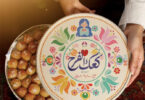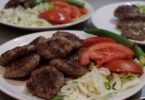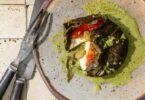Aysha Imtiaz
During harsh Himalayan winters, at the roadside kiosk of chef and restaurateur Lal Shahzadi, a heavenly scent of woody apricots tinged with molasses hangs heavy in the air. She is making a centuries-old recipe passed down generations: Bataring Daudo, or apricot soup.
Shahzadi (whose full name means “Red Princess” in Urdu) is part of the hardy Burusho community in Hunza, Pakistan – known as much for its hospitality as its antiquity. She runs a food kiosk named Hunza Food Pavilion in the district’s capital, Karimabad, and is viscerally connected to her land, championing organic ingredients and indigenous practices.
“The Hunza diet is instinctively reliant on fruit – fresh in the summer and dried in the winter. Simple, fuss-free food [means a] simple, fuss-free life,” she said.
Shahzadi’s recipe for bataring daudo is just that: simplicity personified. “Bataring means apricot, and daudo means soup in my Burushaski language,” she explained.
Hunza’s naturally dried apricots are shrivelled and hard, looking nothing like the perfectly round and plump apricots seen in the West, and they taste like toffee when cooked. To make the robust soup, the apricots are first washed and boiled. Next, wheat flour is mixed with water to create noodle-like crumbles. Added into the simmering apricot water, these little nuggets of dough help to thicken the mixture, resulting in a sort of dumpling soup with musky notes.
Less of a recipe and more of a strategy to get through lean seasons with scant resources, bataring daudo speaks of self-sufficiency, resilience and a survivor’s spirit. The soup pays homage to a mindset of subsistence and an approach to nutrition informed by ancient ways of living as one with the land.
“This soup has been used for centuries because it wards off colds and is nutrient dense,” said Shahzadi. It also helps sluggish bowel movements, she added, and is believed to relieve joint aches and cure fevers.
“The wheat makes [the soup] fortifying and satiating. It provides a surge of energy and warmth for strenuous work,” Shahzadi said. “The apricots remind you there are better times of abundance to come.”
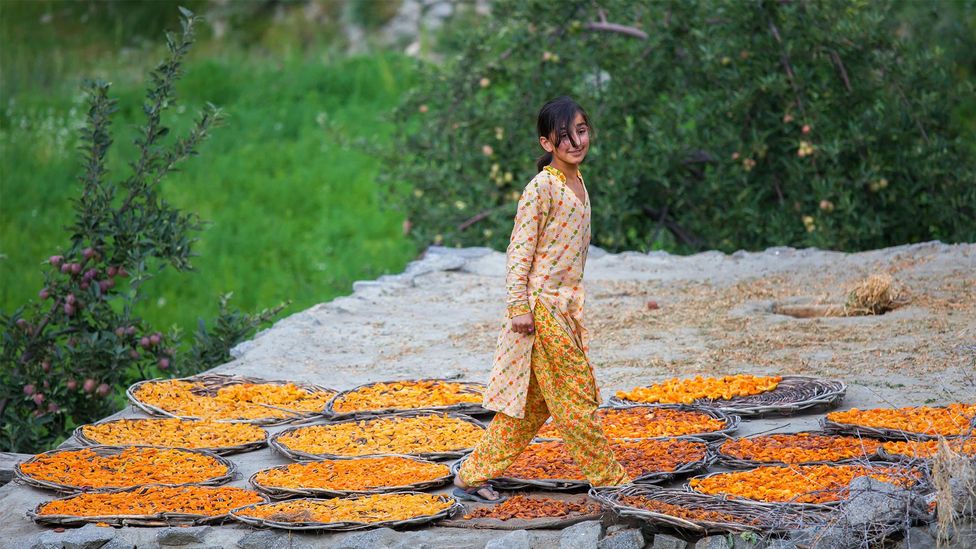
The Hunza diet is instinctively reliant on fruit (Credit: Jinho Choi/Alamy)
Straddling Central and South Asia, Shahzadi’s picturesque valley looks like an oasis untouched by modernity – and for the longest time, it was. Writers such as Horst Geerken and Annette Bräker in their book, The Karakoram Highway and the Hunza Valley, marveled that until the 1950s, children in Hunza had not seen a bicycle or motor vehicle. For over 900 years, it was an independent principality – a princely state ruled by a Mir (a local prince or general) until 1974.
Its location and rough terrain made the area inaccessible, with very little outside influence or interference. For instance, Shahzadi’s Burusho language, Burushaski, is a language isolate and bears no resemblance to any other human speech.
In fact, the very existence of the robust Hunza population in this sequestered highland stumps historians. The popular theory is they are descendants of Alexander the Great, but historical evidence of this has been disputed.
“How the small race that speaks the language of Hunza has come to occupy these valleys will perhaps never be explained by historical evidence… the Hunza are mysterious… an erratic block of an ancient world, still with its peculiar knowledge and traditions, and preserved from the decay of time in that profound cleft of theirs,” wrote British agronomist Guy T Wrench in his book, The Wheel of Health.
The mystique shrouding the idyllic region has made it the stuff of legend. Hunza has been referred to as the “lost kingdom of the Himalayas”, a near utopia, and some speculate that it’s eerily similar to beautiful and secluded worlds such as James Hilton’s mythical Shangri-La.
But even paradise wasn’t problem-free.
“My ancestors had a very secluded and difficult existence,” Shahzadi said. “From gathering firewood and preparing stony terraced lands [to be fit for subsistence agricultural use] and staving off starvation during times of poverty, being isolated meant self-sufficiency was the only solution.”
The same remoteness that gave the region its virgin, breath-taking beauty is also what necessitated that the Burusho find inventive ways to repurpose plentiful summer harvests for the frigid winters.
Shahzadi’s ancestors achieved this through preserving fruit, such as apricot, in times of abundance. And today, local residents use apricots as the answer to all life’s woes, she explained. “We use each part of the apricot for different purposes,” she said. From beauty products (like shampoo) and medicine to winter soup, the humble apricot is used as both a remedy and a meal – and is a mainstay in their culture.
But bataring daudo, with its unadulterated recipe, is perhaps the purest celebration of the fruit, and the Hunza ideology.
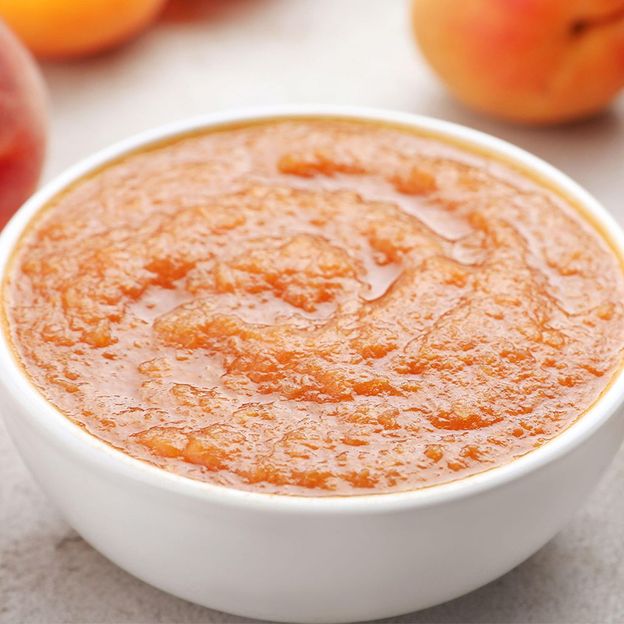
Puree apricots with water until they resemble a pulpy sauce (Credit: olga Yastremska/Alamy)
Bataring Daudo recipe
Serves 2-3
Method
Step 1
Wash the apricots well and boil them in the 250ml of water for 5 to 10 minutes, or until soft. Remove from water and set aside; reserve the water.
Step 2
Make flour nuggets by spreading the flour on a plate. Drizzle around ⅛ cup or 30ml water over the flour and mix with your fingers until the dough nuggets (dumplings) are formed.
Step 3
Place the apricots in a blender, adding the reserved water, and puree until they resemble a pulpy sauce.
Step 4
Pour the mixture into a pot and bring it to a rolling boil. Add the dumplings and simmer on low heat for 10 minutes, moving a spoon gently back and forth to stir (do not stir in circular motion). The idea is to thicken the soup while retaining the dumplings, not to dissolve them. Add additional water to reach the desired consistency. Serve hot.
Tips
With minor tweaks, bataring daudo can be elevated into another soup: Haneetze Daudo. Haneetze refers to the kernel inside the seed of the apricot, so the only addition to this recipe is 200g of powdered apricot kernels (substitute with almonds if unavailable) to the flour mixture before making the dumplings. This provides a nuttier and even more nutritious, if slightly granular, texture.
Also, many Hunza restaurants today roll out a thin roti or chapatti and cut it into thin strips (like fettucine noodles) to add to the soup.


